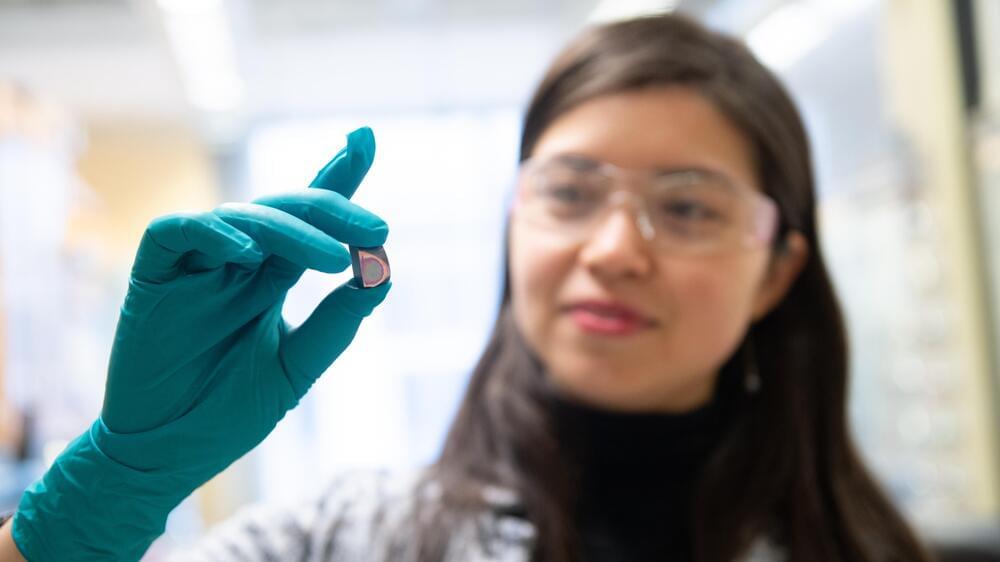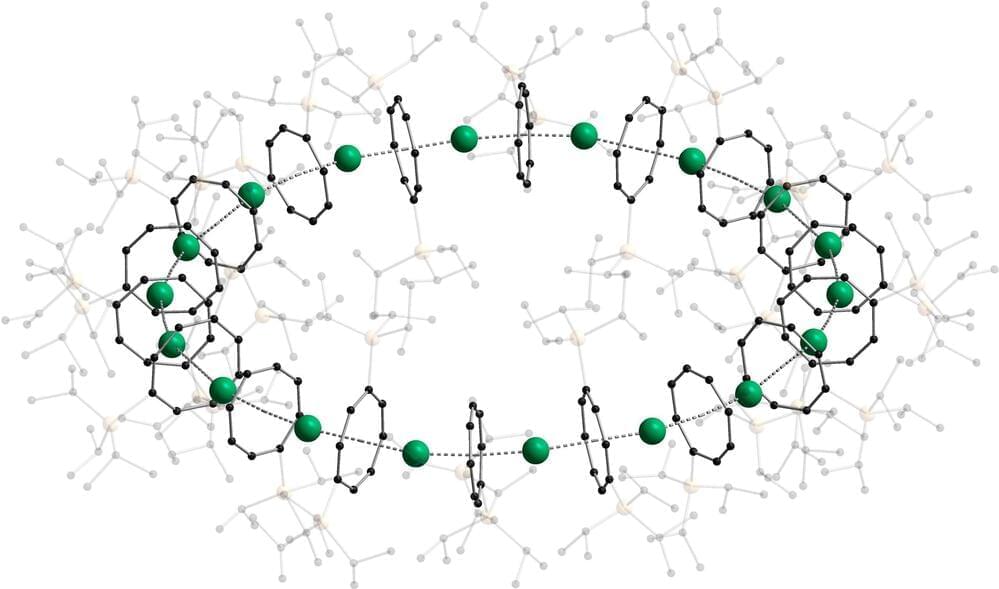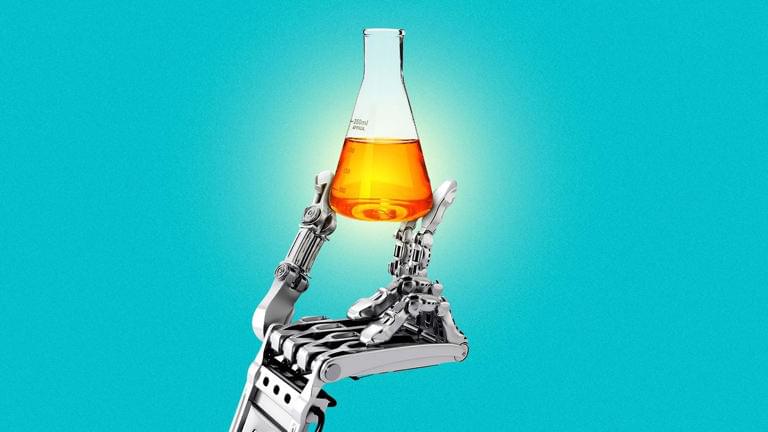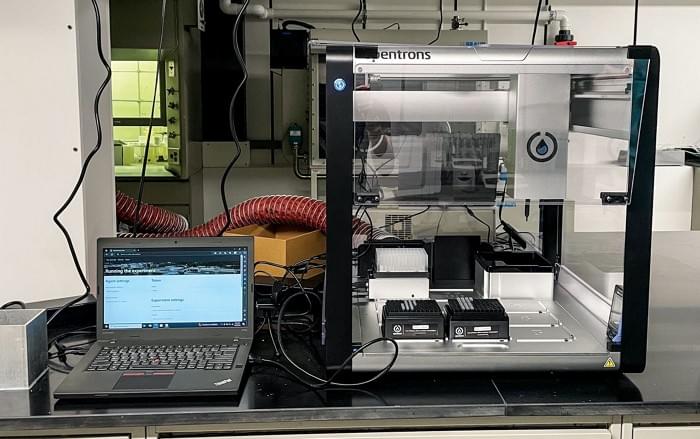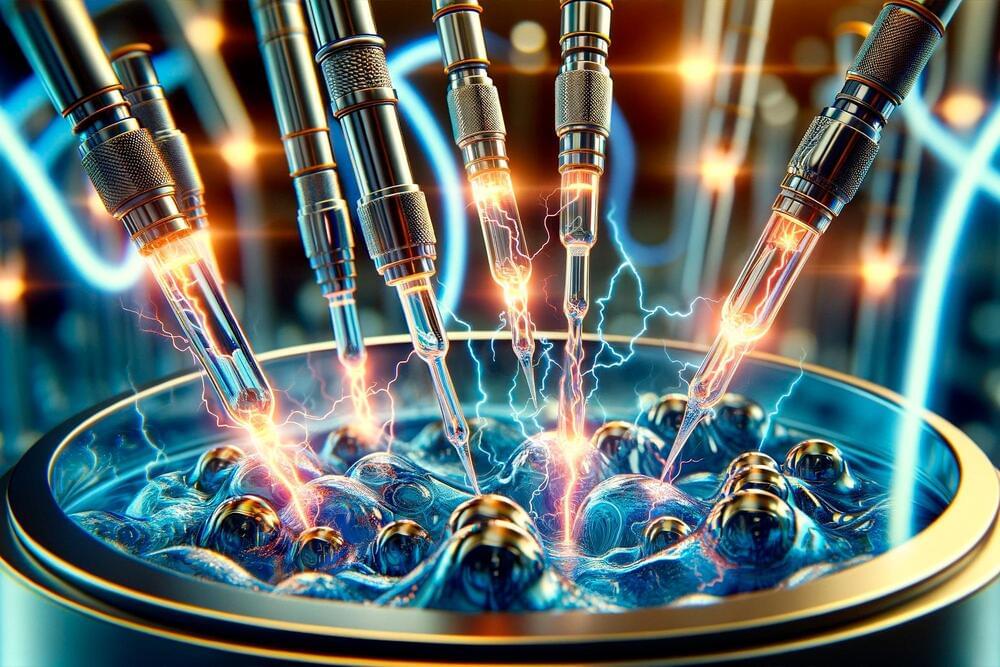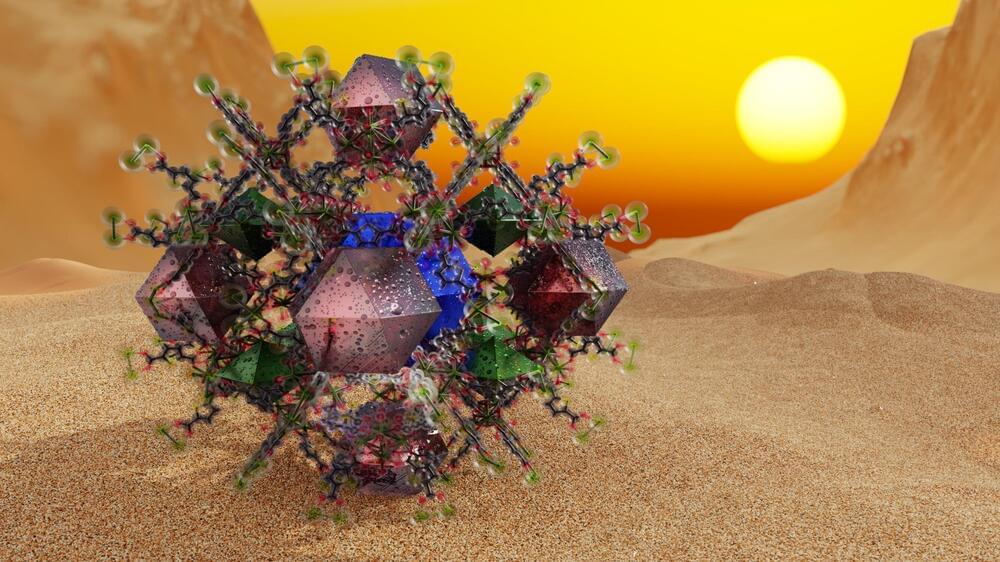Jan 11, 2024
An artificial muscle device that produces force 34 times its weight
Posted by Omuterema Akhahenda in categories: biotech/medical, chemistry, cyborgs, robotics/AI, wearables
Soft robots, medical devices, and wearable devices have permeated our daily lives. KAIST (Korea Advanced Institute of Science and Technology) researchers have developed a fluid switch using ionic polymer artificial muscles that operates at ultra-low power and produces a force 34 times greater than its weight. Fluid switches control fluid flow, causing the fluid to flow in a specific direction to invoke various movements.
KAIST announced on the 4th of January that a research team under Professor IlKwon Oh from the Department of Mechanical Engineering has developed a soft fluidic switch that operates at ultra-low voltage and can be used in narrow spaces.
The results have been published in Science Advances (“Polysulfonated Covalent Organic Framework as Active Electrode Host for Mobile Cation Guests in Electrochemical Soft Actuator”).

